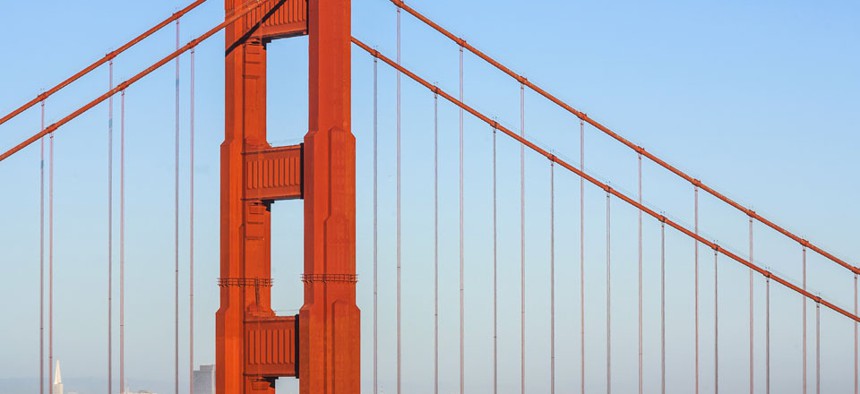Bay Area Cities Are 'Overdue' for a Massive Earthquake

Jorg Hackemann/Shutterstock.com

Connecting state and local government leaders
Faults have stored up more than enough energy for a disaster, according to new research.
Here's discomforting news for Californians worried about the shifting ground under their toes: Four urban areas in the Bay Area have "stored enough energy to produce major earthquakes," according to new research .
Evidence that something nasty is rumbling comes from the behavior of the San Andreas fault system, which runs up the state and through San Francisco. When gargantuan blocks of the earth's crust press against each other, they can do a couple of things: One, they can slowly grind or "creep" against each other, a process that relieves stress. Two, they can butt heads and become "locked," a situation that causes energy to mount and mount until it's released in an earthquake.
About 28 percent of the San Andreas is now locked, say researchers in the Bulletin of the Seismological Society of America . That means that several parts of heavily developed Northern California are sitting are seismic MOABs. Say the scientists involved in this study:
[F]our faults have accumulated sufficient strain to produce a major earthquake. Three creeping faults have large locked areas (less than 1 mm or .04 inches of creep per year) that have not ruptured in a major earthquake of at least magnitude 6.7 since the reporting of earthquakes by local inhabitants: Rodgers Creek, northern Calaveras and southern Green Valley. The southern Hayward fault, which produced a magnitude 6.8 earthquake in 1868, is now approaching its mean recurrence time based on paleoseismic studies.
The authors also estimate three faults appear to be nearing or have exceeded their mean recurrence time and have accumulated sufficient strain to produce large earthquakes: the Hayward (M 6.8), Rodgers Creek (M 7.1) and Green Valley (M 7.1).
This map from a 2008 study shows the location of these faults north and east of San Francisco:
James Lienkaemper of the U.S. Geological Survey, one of the study's coauthors, says these findings are a "good reminder to prepare today for the next major earthquake." More support for that warning (though specific to Southern California) came from one of his colleagues at September's CityLab summit in Los Angeles. Lucy Jones, a USGS seismologist who's helping L.A. develop a quake-resiliency plan, gave a dire risk assessment for the expected "Big One." Her full comments are written up here , but these are some of her more fear sweat-inducing predictions:
"When the San Andreas earthquake happens in Southern California—and that's the most-likely big earthquake in the United States—we know that all of the transportation life lines, the electric systems, the water systems, the gas lines, that cross the San Andreas fault, exactly where they'll break and what will happen when they break. That hasn't gotten anybody to do anything about them. So here in Los Angeles, we get 85 percent of our water from outside the region—that means across the San Andreas fault—in aqueducts that will break, [and] we could tell you how many times they're going to break and that it's going to take 18 months to get them fixed again and we have six-months' supply of water on this side of the fault—when we're not in a drought and the reservoirs are full....
An event of this magnitude will likely trigger a catastrophic situation for emergency responders. "When you have that many fires starting—because the fires are proportional to the number of houses receiving strong shaking—we run out of fire engines," Jones said. "We know we will not have enough fire engines to handle the fires. And mutual aid is going to have to cross that broken San Andreas to get to us."
( Top image via Jorg Hackemann / Shutterstock.com )





